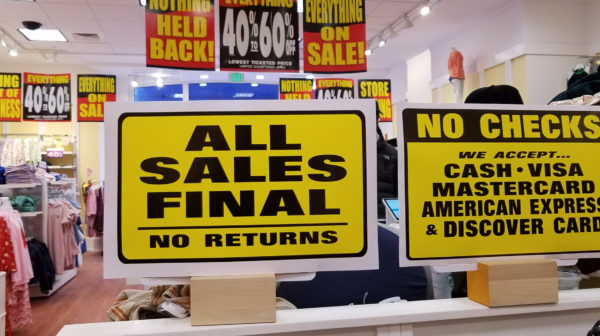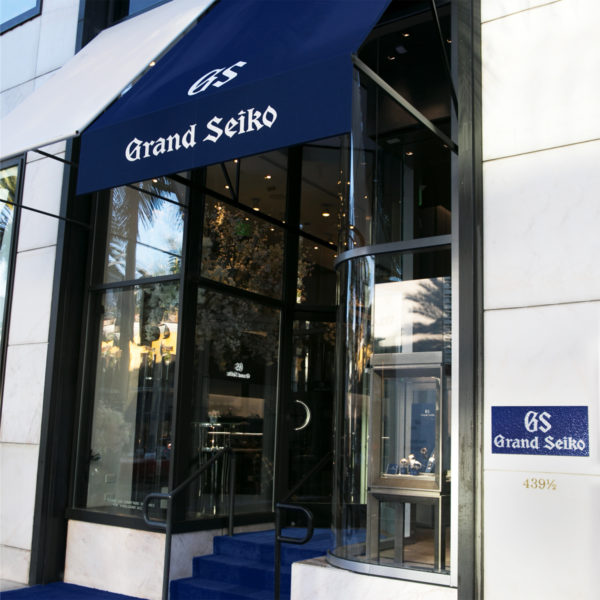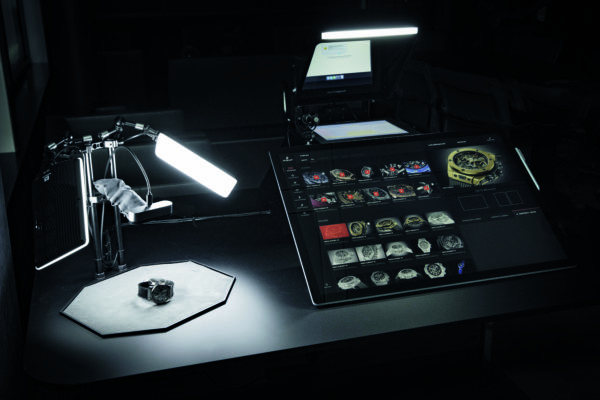For years, the watch industry has been resistant to selling online. But now, luxury watch brands and, most importantly, the larger groups are not only racing to embrace digital clientele but are also trying to gain more control over the final sale. As a result, traditional retailers are facing even more pressure in the age of “Millennialization” and have to quickly come up with new ideas to attract customers who are looking more and more for experiences rather than transactions — new ideas that, if done right, could very well lead to a renaissance of offline retail.
Time to Move Fast
In 2015, the Toys “R” Us flagship store in Times Square, one of the world’s busiest pedestrian areas, closed its doors after attracting millions of visitors for 14 years. Earlier that year, F.A.O. Schwarz (which was bought by Toys “R” Us in 2009 and sold in 2016) closed its iconic store on Fifth Avenue in July after three decades, basically ending a 145-year-long era in New York City retailing. Back then, the city’s escalating rental costs were usually cited as the main reason for the two prominent closures. Retail experts, however, also saw another sign of “clicks vs. bricks” or what’s usually described as the looming “retail apocalypse.” It would seem they were right in their assessment. Three years later, in March 2018, the world’s largest specialty toy and baby products retailer, Toys “R” Us, ultimately decided to close all of its 800 stores, making history as the third largest retail bankruptcy in the U.S. Other bad news started to hit closer to (the luxury industry’s) home. In April 2017, Ralph Lauren announced the shutdown of its Fifth Avenue store in New York, hoping to save $140 million a year. Department stores like Macy’s and J.C. Penney announced widespread store closures to react to what’s usually described as “the shifting purchasing habits of North American consumers,” for some, finally a sign that the two retail giants were starting to give up their “pre-Amazon strategies.” For others, the challenges in retail were far more complex than simply blaming Amazon for taking market share or Millennials for being interested in spending more on experiences than on goods. “The root cause is that many of these long-standing chains are overloaded with debt,” noted Bloomberg in November 2017. (Toys “R” Us had indeed been struggling with mounting debt, due to a leveraged buy-out by a few private equity firms in 2005, but the company also had failed to adapt and deal with the competition from Amazon and other online platforms.)

In other words, e-commerce has undoubtedly become one of the biggest disruptors and challenges for traditional retailers, but giving up physical locations does not seem to be the right answer either. Ironically, even Amazon (estimated to be responsible for about 44 percent of all U.S. e-commerce sales last year, according to a study from One Click Retail) cannot survive online alone. The online giant opened its first NYC brick-and-mortar store in 2017 (with many more U.S. locations to follow) and reported first-quarter physical stores sales of $4.26 billion in 2018 (thanks primarily to sales from Whole Foods, which was acquired in 2017). And, luckily, the same insight also means a second chance for F.A.O. Schwarz: the company made an NYC comeback under new ownership with a 20,000-square-foot flagship location in Rockefeller Plaza over the most recent holiday season. But, to be successful, e-commerce will have to be an integral part of the company’s strategy as well.
And the same goes for the companies that are selling much more expensive toys.
The Watch Industry’s Hybrid Retail Expansion
One of the biggest stories in the watch industry in 2018 was undoubtedly the acquisition of Tourneau. Bucherer, the largest European retailer for fine watches and jewelry, announced in January that it had bought the largest U.S.-based luxury watch retailer from an investor group. This move not only added the second largest market and 28 retail locations across 10 states to Bucherer’s portfolio, it also included Tourneau’s fully integrated e-commerce website and certified pre-owned business. Tourneau CEO Ira Melnitsky’s approach: “We believe the future of traditional retail is still very strong and will be complemented very well by our digital and e-commerce initiatives. One will support the other and vice versa.”

Melnitsky’s strategy should pay off. A survey that was conducted in 2017 by consulting company Deloitte in six countries among a total of 4,500 consumers revealed that “the vast majority of people surveyed are still likely to buy a watch in-store.” At the same time, the development of online channels turned out to be “the second priority of watch executives after [the] introduction of new products.” Global management consultancy Bain & Company saw online sales in the luxury goods sector jump “by 24 percent in 2017, reaching an overall market share of 9 percent” (with shoes, jewelry, and handbags ranked as the three fastest-growing product categories). At the same time, Bain also estimated that physical stores would still “account for 75 percent of purchases over the next decade.”
This sentiment is shared by most of the watch groups. In November 2014, Citizen opened the brand’s U.S. flagship store in Times Square and is now also offering its collection online. In November 2017, Seiko opened the first dedicated Grand Seiko boutique in the world in the U.S. (which also became Seiko’s third flagship store in the U.S.). Alternatively, most of the Japanese brand’s collection can now be purchased online as well. Shortly before that, Swatch Group’s Omega had announced the official launch of its first-ever online sales platform, in a first step “exclusively for customers in the United States,” while its sister-brands Breguet, Blancpain, and Harry Winston reopened their New York flagship stores on Fifth Avenue. Almost simultaneously, LVMH’s Bulgari celebrated the reopening of the brand’s stunning flagship boutique across the street.

Richemont, on the other hand, already generates a majority of its total revenue from its own shops and now has an eye on conquering digital. The group started 2018 by buying the rest of online luxury retailer Yoox Net-à-Porter in a $3.3 billion deal; launching “Baume,” an online-exclusive entry-level watch brand; and making its first move into the online second-hand luxury watch market by acquiring UK-based Watchfinder in June 2018.
LVMH’s Hublot went, for once, for another kind of fusion and launched a combination digital and online shop. Since June of last year, customers can connect online with the Hublot “Digital Boutique” and interact with the sales team (in the beginning, only in the New York boutique) via FaceTime or Skype, and have “the desired product presented live.” In all fairness, in-person solutions have been used by online retail websites for many years now, be it via chat, email or even in-store staff equipped with cameras. But Hublot’s example shows how watch brands are now trying to get ready for a generation of customers that might never walk into a store or use the visit to a physical store only for an online purchase later. Simply put, if a brand can control all channels, it no longer matters where the client ends up buying.

The Clock is Ticking for Smaller Players
During a phone call with analysts in November 2017, Richemont’s Chief Financial Officer Burkhart Grund said that “the traditional wholesale trade, especially in watches, will disappear.” And, indeed, with the bigger market players now consolidating an emerging (much better controlled) online watch marketplace, and brands trying to gain more control over the final sale and the secondary market, no one seems to disagree with his assessment of a “tough place out there.” Audemars Piguet, for example, wants to totally control the distribution of its luxury watches, cutting out third-party multi-brand retailers, within the next three to five years. “We’ll accelerate the consolidation process to arrive at a totally integrated retail network,” Chief Executive François-Henry Bennahmias told Reuters last September. On top of all these challenges, two of China’s biggest e-commerce players – Alibaba and JD.com – are now also trying to get into the luxury e-commerce market, and it’s probably only a matter of time until Amazon will join the premium race as well, especially after eBay announced in September the expansion of its Authenticate Program to include watches $500 and up.
Basically, the traditional independent retailers are currently confronted with several challenges at the same time:
- It is becoming more difficult to be able to afford a prime location for an independent retail store.
- Brand-operated flagship stores nearby usually offer more choice and, in most cases, also a much more exclusive brand experience.
- The next generation of customers is likely to start a relationship online, which requires a digital presence at least as good (and as visible) as the store’s offline concept.
- Hybrid consumption behavior requires an effective digital strategy and state-of-the-art e-commerce logistics.
- Personalization and exclusive limited editions have become essential elements of a successful e-commerce operation but are offered more and more by the brands directly.
- Independent(and often heavily funded) e-commerce sites usually incorporate discounts into their strategies that can hardly be met by retailers with a physical store location and the need for permanent stock.
- Consumers are more knowledgeable today and are often looking for a 360-degree partner with a vast range of services, starting from finding the right timepiece to making repairs and managing the pre-owned or even the vintage market – a role watch brands are also getting better at.
But there’s good news, too. While retail in the U.S. may have seen better times, there are still a lot of watch brands that rely on independent partners with physical locations. When we recently had the opportunity to talk with Patrick Cremers, Director of Patek Philippe’s Geneva Salons, for example, a statement about “the respect of our retail network is very important; we are the opposite of the other groups” immediately made it clear that we were not in a quarterly call with analysts.
Stay tuned for Part Two of “Is the Watch Industry on the Cusp of a Renaissance for Physical Retailers?” coming tomorrow.
Ed. Note: This article is the first of a two-part, in-depth report on physical retail in the watch industry that first appeared in the Nov./Dec. 2018 issue of WatchTime magazine under the title “Time to Move Fast.” Click here for part two.
